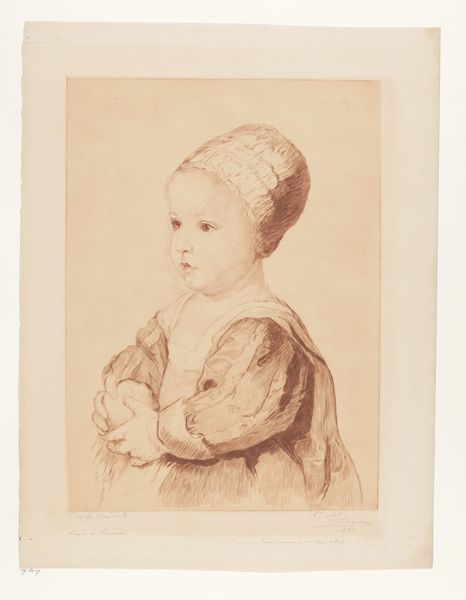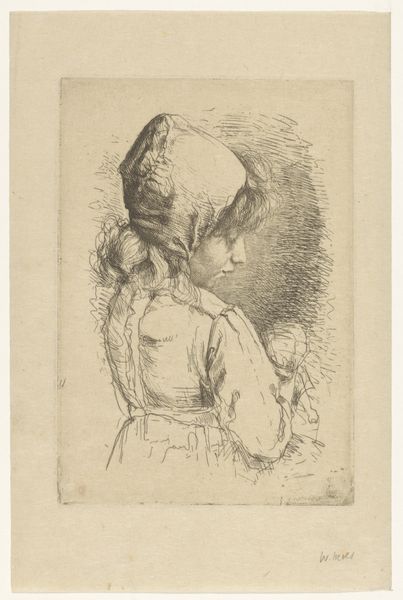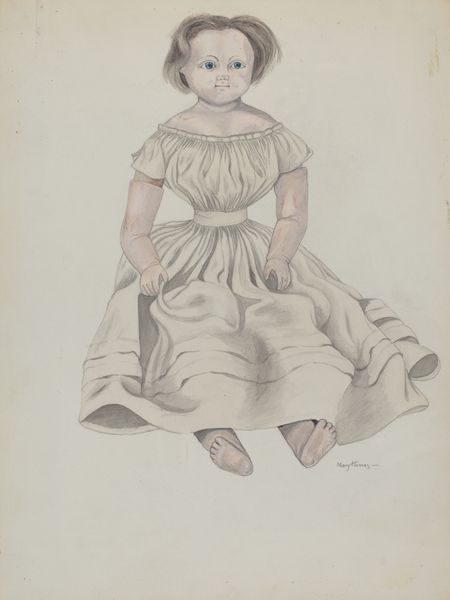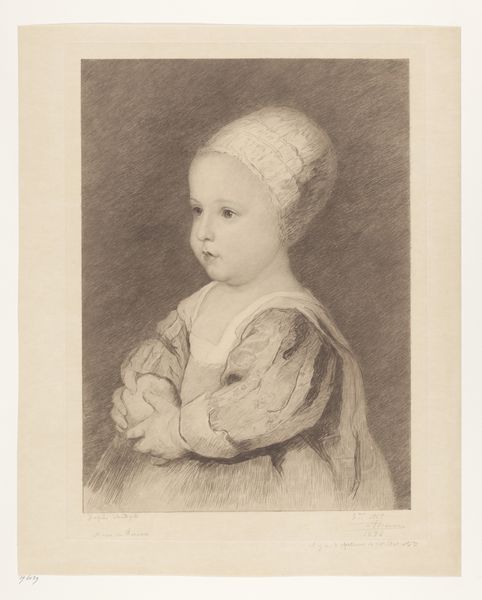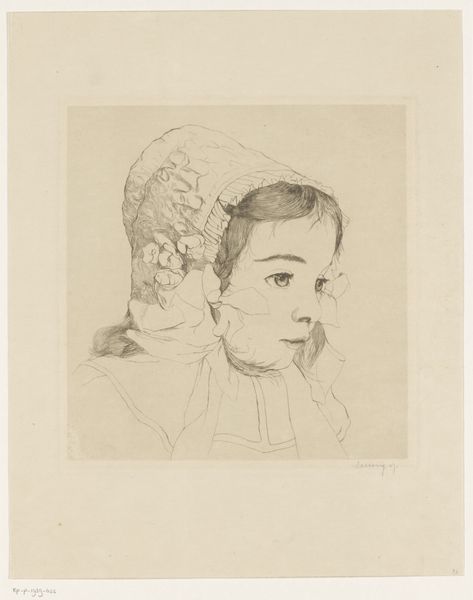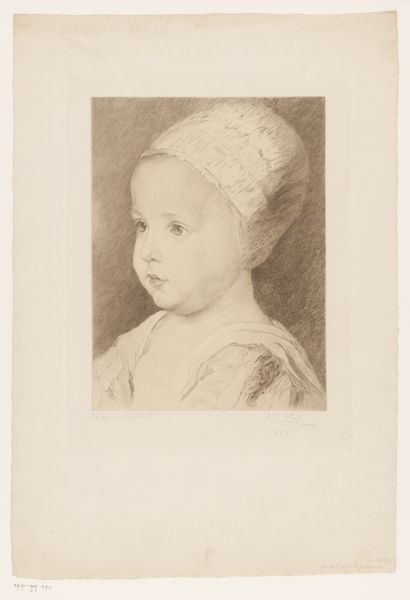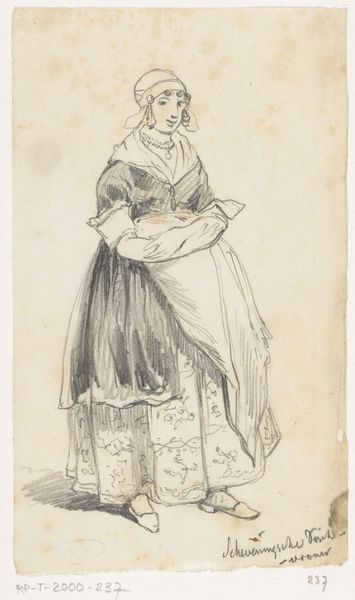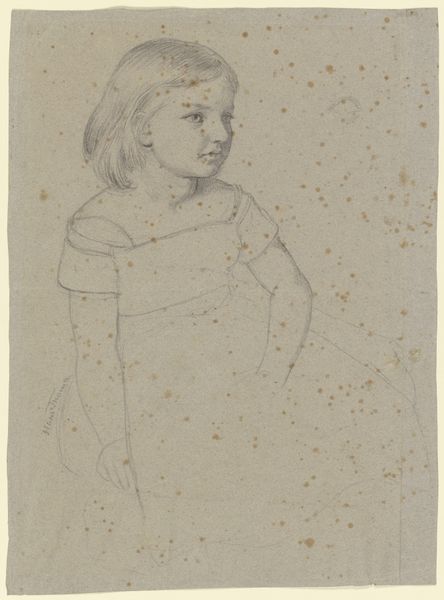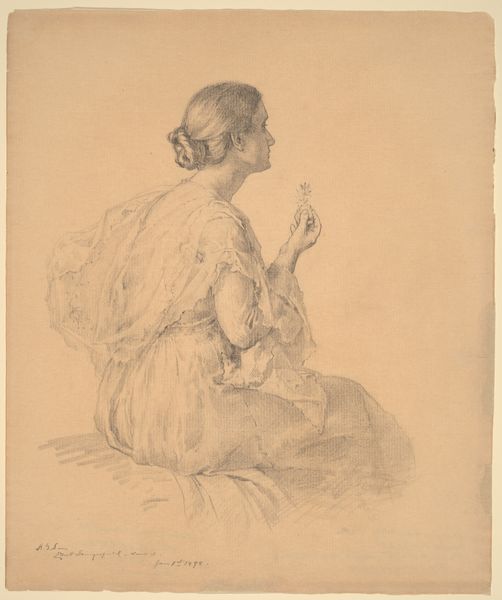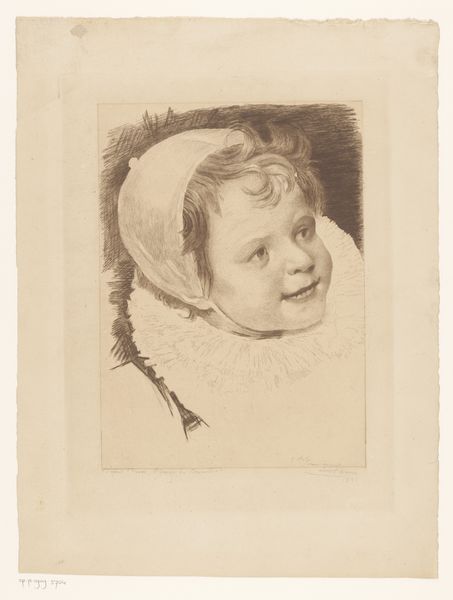
drawing, pencil
#
drawing
#
16_19th-century
#
pencil sketch
#
pencil drawing
#
pencil
#
portrait drawing
#
genre-painting
#
academic-art
#
realism
Copyright: Public domain
Editor: Here we have "Breton woman at the pardon," a pencil drawing by Jules Breton, created in 1868. The woman’s distant gaze and the intricate detail of her traditional clothing give the piece a contemplative, almost wistful mood. What strikes you most about this drawing? Curator: It's fascinating how Breton uses the visual language of clothing, particularly the headdress, as a marker of identity. In Breton culture, such intricate lacework wasn't just fashion, but a powerful symbol. A headdress conveyed volumes about a woman's status, region, and even her emotional state within the community. Editor: So, you’re saying the clothing itself tells a story? Curator: Precisely. Consider the "pardon," the religious ceremony indicated in the title. These events were profoundly important in Breton life, moments where personal and communal identity were reaffirmed. This woman’s traditional dress at such an event becomes a powerful statement, a visual declaration of her belonging and faith. Do you see anything else? Editor: I do, it seems a lot of effort and care was taken to focus on detail around her face. Curator: Notice too how Breton directs our gaze not to her eyes, but just off to the side. It invites us to wonder what she sees, what she is thinking about. Is it the ceremony itself, or something deeper, something personal? What cultural memories are triggered, even now, by such a visual record? Editor: It’s interesting how something that appears as a simple portrait is laden with so much cultural meaning! I'll never look at historical portraiture the same way again. Curator: Indeed. The layers of symbolism within everyday imagery are often profound, constantly shaping our understanding of ourselves and the past. It is like archaeology but in pictures.
Comments
No comments
Be the first to comment and join the conversation on the ultimate creative platform.

